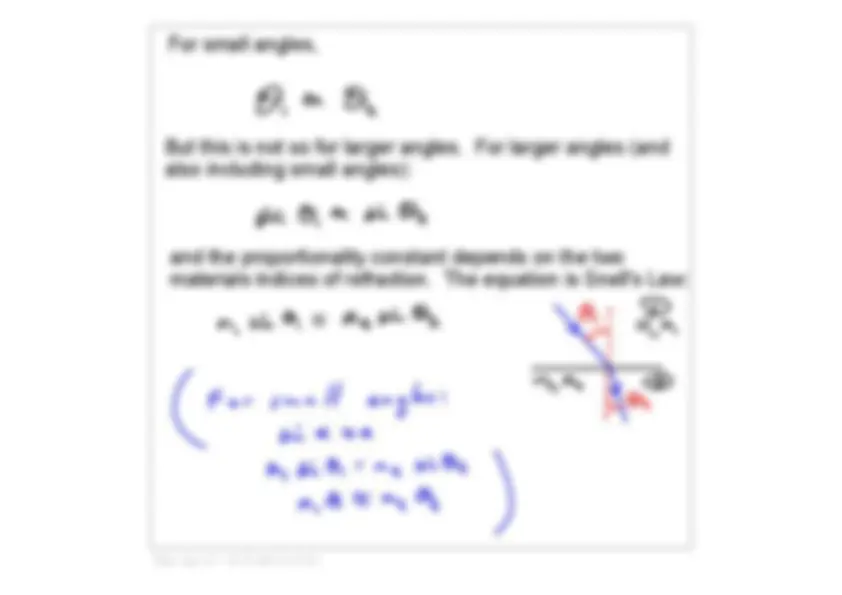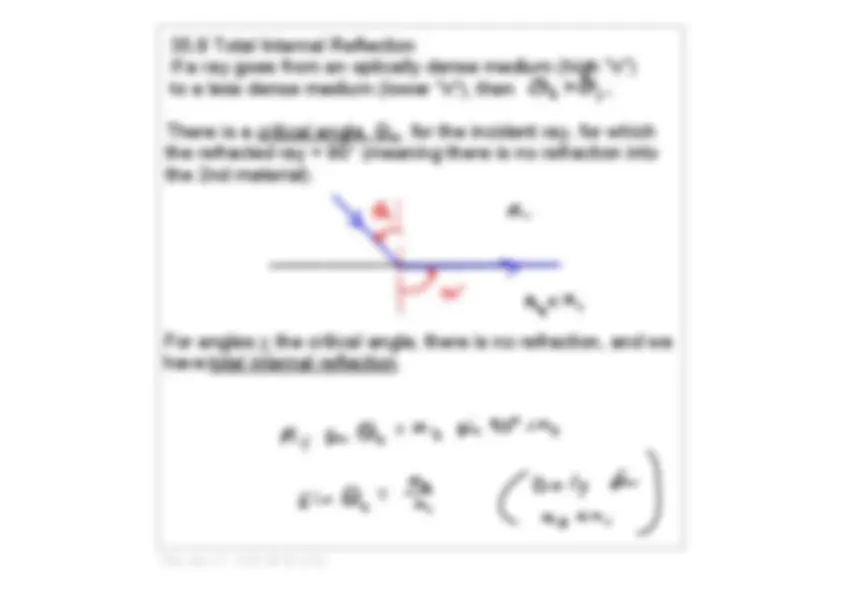







Study with the several resources on Docsity

Earn points by helping other students or get them with a premium plan


Prepare for your exams
Study with the several resources on Docsity

Earn points to download
Earn points by helping other students or get them with a premium plan
Community
Ask the community for help and clear up your study doubts
Discover the best universities in your country according to Docsity users
Free resources
Download our free guides on studying techniques, anxiety management strategies, and thesis advice from Docsity tutors
An explanation of optical phenomena, including reflection and refraction, with real-life examples and the use of snell's law. It also covers total internal reflection and its applications, such as optical fibers.
Typology: Study notes
1 / 9

This page cannot be seen from the preview
Don't miss anything!






35.4 Reflection
Example: You & a friend stand on opposite edges of a pond. Your eyes are 180cm above the water level. You see the reflection of his eyes at an angle of 8.0° below the horizontal in the pond. How wide is the pond?
35.5 Refraction
Refraction occurs because a wave changes speed as it goes from one medium to another.
We find that the speed of light is different in different media. We characterize the differences in speed with theindex of refraction, n.
For a particular material:
35.8 Total Internal Reflection If a ray goes from an optically dense medium (high "n")
to a less dense medium (lower "n"), then
There is a critical angle, Θ , for the incident ray, for which the refracted ray = 90° (meaning there is no refraction into
the 2nd material).
For angles > the critical angle, there is no refraction, and we
havetotal internal reflection.
The phenomenon of total internal reflection is behind
applications such as optical fibers.